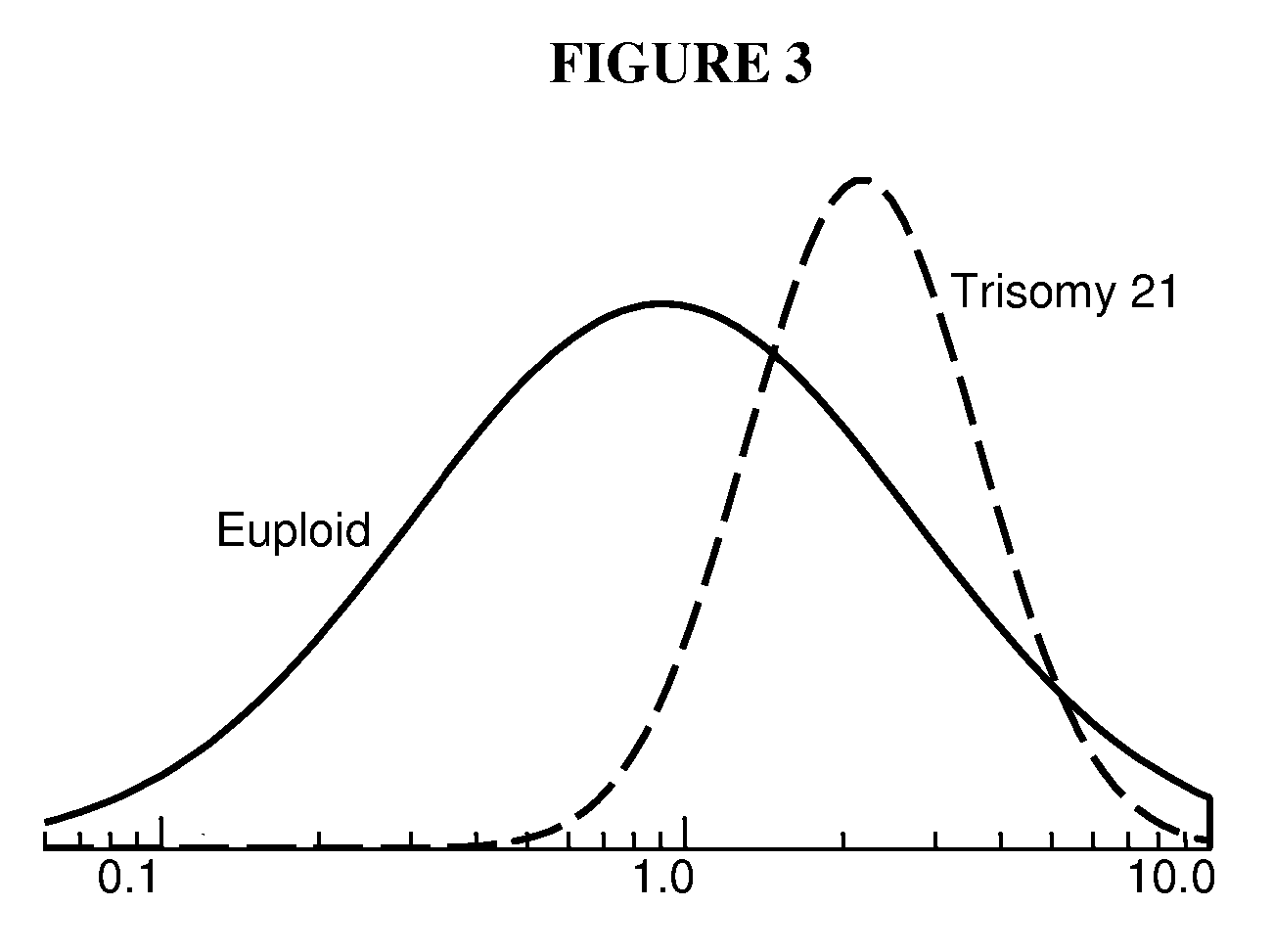Screening for down syndrome
- Summary
- Abstract
- Description
- Claims
- Application Information
AI Technical Summary
Benefits of technology
Problems solved by technology
Method used
Image
Examples
example
DNA Quantitative Analysis
[0046] Quantitative real-time PCR using a TaqMan Assay to measure total DNA levels of four non-chromosome 21 loci: glyceraldehyde-3-phosphate dehydrogenase GAPDH (12p13) (GenBank Accession No. NC—000012); Beta-globin (11q21) (GenBank Accession No. NC—000011); Beta-actin (7ptel); and p53 (17p13) (GenBank Accession No. NC—000017) were performed using the APPLIED BIOSYSTEMS® 7700 sequence detection system.
[0047] PCR primers and probes were as follows:
GAPDH forward(SEQ ID NO: 1)5′-CCC CAC ACA CAT GCA CTT ACC-3′GAPDH reverse(SEQ ID NO: 2)5′-CCT AGT CCC AGG GCT TTG ATT-3′GAPDH fl probe(SEQ ID NO: 3)5′-6FAM-AAA GAG CTA GGA AGG ACA GGC AAC TTG GC-TAMRA-3′P53 forward(SEQ ID NO: 4)5′-GGT CGG CGA GAA CCT GACT-3′P53 reverse(SEQ ID NO: 5)5′-CTG CCG GAG GAA GCA AAG-3′P53 fl probe(SEQ ID NO: 6)5′-6FAM-TGC ACC CTC CTC CCC AAC TCCA-TAMRA-3′Beta-Globin forward(SEQ ID NO: 7)5′-GTG CAC CTG ACT CCT GAG GAGA-3′Beta-Globin reverse(SEQ ID NO: 8)5′-CCT TGA TAC CAA CCT GCC CAG-3′...
PUM
| Property | Measurement | Unit |
|---|---|---|
| Volume | aaaaa | aaaaa |
| Volume | aaaaa | aaaaa |
| Angle | aaaaa | aaaaa |
Abstract
Description
Claims
Application Information
 Login to View More
Login to View More - R&D
- Intellectual Property
- Life Sciences
- Materials
- Tech Scout
- Unparalleled Data Quality
- Higher Quality Content
- 60% Fewer Hallucinations
Browse by: Latest US Patents, China's latest patents, Technical Efficacy Thesaurus, Application Domain, Technology Topic, Popular Technical Reports.
© 2025 PatSnap. All rights reserved.Legal|Privacy policy|Modern Slavery Act Transparency Statement|Sitemap|About US| Contact US: help@patsnap.com


